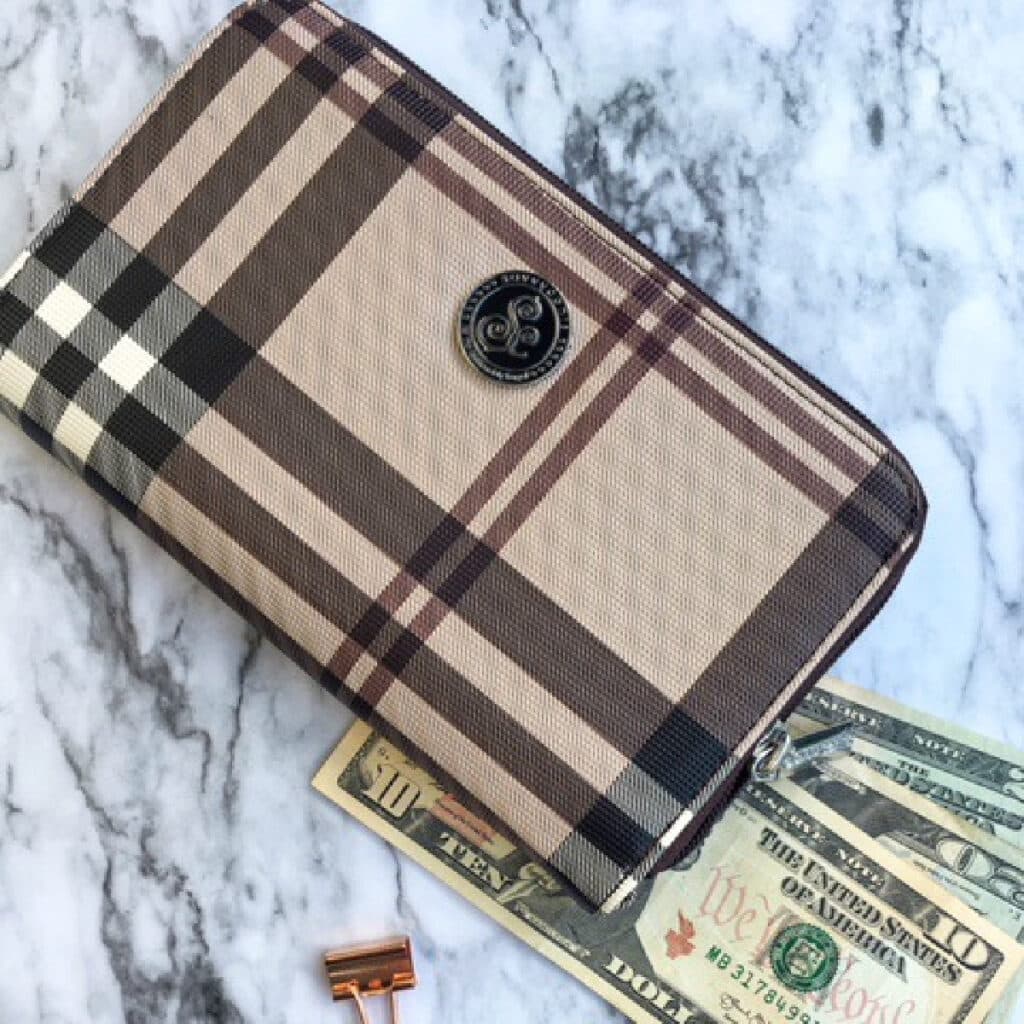Years ago, my husband and I felt stuck. We weren’t struggling to pay the mortgage or car payment, but no matter how much we earned, our monthly income seemed to disappear by the end of the month. It felt like we were constantly waiting for the next paycheck—even though we didn’t think we were spending that much.
We covered the essentials, but if something unexpected popped up—like my husband needing new running shoes—it would throw our whole monthly budget off. We’d find ourselves dipping into savings or relying on a debit card for small expenses we thought we should have covered.
It was frustrating.
One night, while talking it through, I remembered something my parents did growing up: the envelope budget system. They always had physical envelopes for different categories like groceries, clothing, and eating out. At first, my husband wasn’t sure. He figured using cash instead of a card wouldn’t change anything, since we were still working with the same amount of money. But he agreed to try it.
And wow—what a difference.

How the Cash Envelope System Works
We started the cash envelope budgeting system by taking out actual cash each pay period. Every two weeks, we’d visit the bank and stuff envelopes with a set amount of cash for each category. This simple shift gave us control over our spending habits—no more wondering where the money went.
Some weeks, we didn’t even spend all the cash in certain envelopes. That leftover money rolled into the next month, building up so we had it when we needed it. No more panic when spring hit and everyone needed new clothes. No more impulse purchases derailing our financial plan.
And one of the best things? We each had our own personal spending envelope. If I wanted to grab McDonald’s while running errands, I could. If my husband craved Starbucks, he didn’t need to check the bank balance. There were no arguments about money, and no guilt over little purchases.
Why Using Cash Changes Everything
Using physical cash instead of a debit or credit card forced us to be more mindful. When you hand over a $20 bill at the grocery store, you feel it. When you see your envelope budget dwindling, you stop and think before spending. That’s something a digital payment just doesn’t do.
It’s a simple way to get back in control of your hard-earned money, especially if you’ve struggled with discretionary spending or trying to hit your savings goals.
How to Start Your Own Envelope Budgeting System
If you’re ready to give this a try, here’s what I suggest:
1. Choose Your Categories
Start with the basics: groceries, personal spending, dining out, clothing, and gifts. As you build your system, you can add more specific spending categories based on your own life—like streaming services, student loans, or your emergency fund.
2. Set a Budget for Each Envelope
Look at your monthly expenses and decide how much to set aside for each envelope category. Be realistic. And remember—it’s okay to adjust after the first few weeks.
3. Use Simple Supplies at First
We started with regular envelopes from the dollar store. Once we knew our numbers, we switched to a small cash envelope wallet (like a mini accordion file). Just make sure you keep your envelopes in a safe place—especially if you’re carrying them with you.
Our Envelope Categories
Everyone’s list will be different, but here’s what’s worked well for our family:
Groceries
I stick to our grocery budget by shopping with cash. No more overspending at checkout. If we’re traveling, I budget part for meals on the road and save the rest for when we get home.
Personal Spending
We each have our own envelope—including our son, who earns an allowance by mowing the lawn and helping around the house. This gives everyone a little financial independence and reduces tension over small purchases.
Dining Out
Eating out is a treat we look forward to. With this budgeting category, we can go out every weekend if we want to. Some weeks we spend less and save up for a special dinner.
Clothing
We don’t buy clothes every month, but when back-to-school or seasonal changes hit, we’ve got the money set aside.
Gifts
May is birthday month in our family. And Christmas? We’re ready for that, too. Having a particular category for gifts means we never panic about affording presents.
Offering
If we miss a Sunday at church, we hold onto the cash until next time. It helps us stay consistent with giving.
What the Envelope System Taught Us
The most important thing the cash envelope method taught us was how to be intentional with our financial decisions. It helped us shift from a spending mindset to a saving mindset. We weren’t just hoping to save what was left at the end of the month—we were choosing to set money aside from the start.
You don’t need fancy budgeting apps or digital tools to see results. Sometimes, using physical envelopes is the best way to take control of your money and stop living paycheck to paycheck.
It won’t solve everything, but it’s a great thing to try if you want to take the first step toward improving your financial health.




Amber says
Great tutorial! I have been thinking about trying this when my fiance and I get our joint bank account this year. I feel like we never know where all our money is going!
Julie says
It is so helpful for figuring out where your money goes. Thanks for stopping by!
Leslie says
These are great tips. I'm thinking this'll be a great idea for myself. It's just me so hopefully it won't be too hard to figure out.
Julie says
It has made such a huge impact in our spending. Thanks for stopping by.